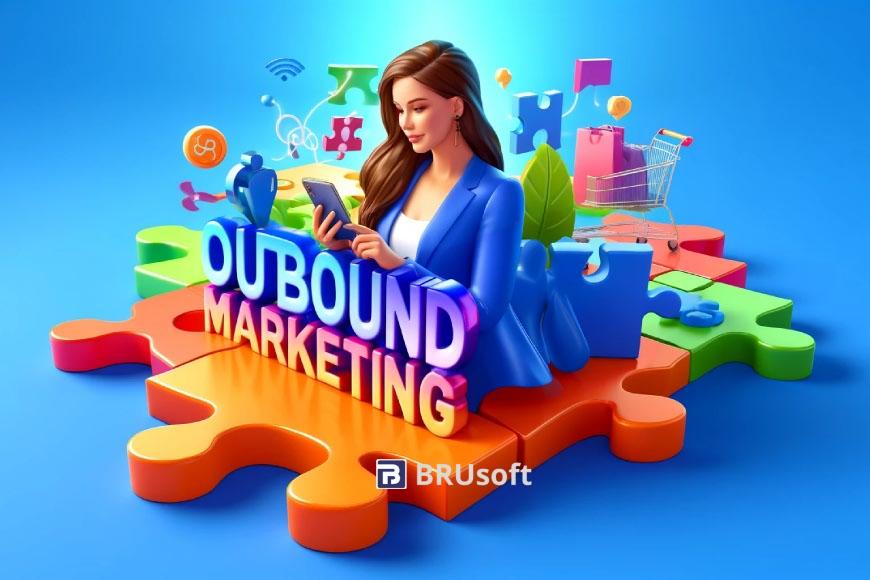Introduction
Outbound marketing, often dubbed as traditional marketing, revolves around reaching out to potential customers directly, rather than waiting for them to find you. This method might seem old-school in the digital age, yet it holds a crucial place in a balanced marketing strategy, synergizing perfectly with its counterpart, inbound marketing. This comprehensive guide will delve into what outbound marketing entails, explore its various types, and discuss how to harness it alongside inbound strategies for maximum impact.
Outbound marketing is not just about broadcasting a message; it’s about targeting the right audience through the right channels and with compelling content. Whether through email blasts, telemarketing, or even newer channels like targeted video content, outbound marketing creates an active connection with potential customers. This guide will cover the best practices, effective channels, and platforms, and provide real-world examples to help you understand how to implement an outbound marketing strategy effectively.
What is Outbound Marketing?
Outbound marketing is defined as any strategy that takes the message directly to a consumer. This approach contrasts with inbound marketing, which involves creating content or experiences tailored to attract customers towards the brand. Typically, outbound marketing seeks to gain the attention of consumers through more traditional forms of advertising and promotions.
The cornerstone of outbound marketing is its proactive approach. Businesses use it to communicate with potential customers who may not yet know the brand or those who do need the specific product or service offered. It encompasses a variety of tactics from cold calling and direct mail to TV ads and trade shows, making it a versatile strategy that, when executed well, can yield significant returns.
Types of Outbound Marketing
Outbound marketing can be divided into several types based on the communication medium and strategy. Common types include:
- Direct Mail: Sending promotional material directly to a recipient’s address.
- Cold Calling: Making unsolicited calls to potential customers.
- Email Marketing: Sending targeted messages to a curated list of emails.
- Television and Radio Ads: Buying spots to broadcast ads to a wide audience.
- Trade Shows and Conferences: Participating in events to promote products or services directly to attendees.
Each type requires specific skills and strategies, particularly in crafting compelling messages that capture attention quickly and encourage action.
Getting Started with Inbound Marketing
Inbound marketing, the yin to outbound’s yang, focuses on creating and sharing content tailored to the prospects’ needs and interests. This approach helps businesses attract, engage, and delight customers, creating a base of fans who buy and promote their product or service. Starting with inbound marketing involves:
- Content Creation: Develop blogs, videos, ebooks, and other content that answer your target audience’s core questions and needs.
- SEO Strategies: Optimize your content to rank higher in search engine results, making it easier for potential customers to find you.
- Social Media Engagement: Use platforms where your target audience spends their time to share content and engage in conversations.
Combining inbound with outbound tactics can amplify your marketing efforts, creating multiple touchpoints with potential customers.
Best Practices for Outbound Marketing
Establishing effective outbound marketing strategies requires adherence to several best practices to ensure that your efforts bear fruit. It’s essential to target your audience precisely, personalize your messages, and measure the effectiveness of every campaign to continually improve your approach.
Channels and Platforms for Outbound Marketing
The choice of channels and platforms for outbound marketing has evolved with technology. While traditional channels like print and broadcast media remain effective, digital channels offer new opportunities for targeted outreach:
- Digital Ads: Platforms like Google Ads and social media provide powerful tools to target specific demographics.
- Video Marketing: Video platforms like YouTube offer a compelling way to present information and engage audiences.
Leveraging these platforms effectively requires understanding the nuances of each and adapting your message accordingly.
Examples of Successful Outbound Marketing
Exploring successful outbound marketing examples provides valuable insights into what works. Campaigns like Coca-Cola’s “Share a Coke” initiative, which personalized bottles with popular names, or Nike’s star-studded TV commercials showcase how combining creativity with outbound strategies can resonate deeply with audiences.
Conclusion
Outbound marketing remains a vital part of a holistic marketing strategy. By understanding its core principles, types, and best practices, businesses can effectively reach out to potential customers, complementing their inbound efforts for maximum market penetration.
FAQs:
- What is the key difference between outbound and inbound marketing?
- Outbound marketing is proactive and direct, targeting potential customers through traditional advertising and promotional tactics. Inbound marketing, conversely, is about creating and sharing content to attract customers to your brand.
- Is outbound marketing expensive?
- Costs can vary widely based on the channels and scale. Traditional media is often more expensive than digital alternatives, which offer more targeted and cost-effective solutions.
- How can I measure the effectiveness of my outbound marketing efforts?
- Use metrics like response rate, ROI, and conversion rates to gauge the effectiveness. It’s also essential to A/B test different messages and channels to optimize performance.
- Can outbound marketing be personalized?
- Yes, modern data analytics and segmentation tools allow for highly personalized marketing campaigns even within the outbound framework.
- What are the biggest challenges of outbound marketing?
- Overcoming noise and apathy are major challenges as consumers are bombarded with numerous marketing messages daily.
- How do outbound and inbound marketing complement each other?
- Outbound can be used to gain immediate visibility and prompt action, while inbound efforts build a longer-term relationship. Together, they create multiple touchpoints along the customer journey, increasing the overall effectiveness of marketing efforts.





